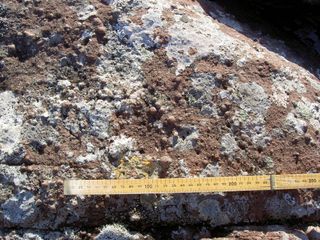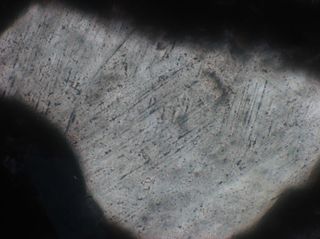Biggest Meteorite Impact in the UK Found Buried in Water and Rock
Scientists have finally located the site of the biggest meteorite collision in the U.K.

The site of the largest meteorite to hit the British Isles has finally been discovered in a remote part off the Scottish coast, 11 years after scientists first identified evidence of the massive collision.
A team of researchers from the Department of Earth Sciences at the University of Oxford located the crater around 12 miles (20 kilometers) west of the coast of Scotland, where the feature lay buried underneath water and rocks that helped preserve it all those years. The scientists published their findings today (June 9) in the Journal of the Geological Society.
"The material excavated during a giant meteorite impact is rarely preserved on Earth, because it is rapidly eroded," Ken Amor, study lead author and researcher at the University of Oxford's Department of Earth Science, said in a statement. "So this is a really exciting discovery."
Related: Oldest Meteorite Collection Found in the Driest Place on Earth

The 0.6-mile-wide (1 km) meteorite is believed to have hit our planet 1.2 billion years ago, when Scotland was a semi-arid environment located near the equator, Oxford officials said in the statement. But there would likely have been no observers of the impact, since most life on Earth was still confined to the oceans at the time while the collision took place on land.
"It would have been quite a spectacle when this large meteorite struck a barren landscape, spreading dust and rock debris over a wide area," said Amor.
Evidence of the collision was discovered in 2008, when scientists found large traces of iridium, a chemical found in high concentrations in meteorites, in a layer of rocks near the northern town of Ullapool.
Get the Space.com Newsletter
Breaking space news, the latest updates on rocket launches, skywatching events and more!
The rocks were initially believed to have resulted from a volcanic eruption, but further analysis of their composition led scientists to their terrestrial origins.

"We're very lucky to have [the rocks] available for study, as they can tell us much about how planetary surfaces, including Mars, become modified by large meteorite strikes," John Parnell, a professor of geology at the University of Aberdeen in Scotland and co-author of the 2008 paper, said in a statement at the time.
Using data gathered from the field, the team of scientists determined the approximate direction from which the meteorite came and thereby located the crater.
Although thousands of meteorites hit the Earth every year, they typically leave much smaller dents. Larger impacts used to occur more frequently, but today, thousands of small fragments from meteorites that hit the Earth every year go largely unnoticed.
- This Weird Meteorite Crashed Through a Doghouse in Costa Rica
- Pow! A Meteorite Slammed into the Moon at 38,000 Mph During Lunar Eclipse
- This Yellow Egyptian Glass Was Forged by a Meteorite Impact 29 Million Years Ago
Follow Passant Rabie on Twitter @passantrabie. Follow us on Twitter @Spacedotcom and on Facebook.
Join our Space Forums to keep talking space on the latest missions, night sky and more! And if you have a news tip, correction or comment, let us know at: community@space.com.

Passant Rabie is an award-winning journalist from Cairo, Egypt. Rabie moved to New York to pursue a master's degree in science journalism at New York University. She developed a strong passion for all things space, and guiding readers through the mysteries of the local universe. Rabie covers ongoing missions to distant planets and beyond, and breaks down recent discoveries in the world of astrophysics and the latest in ongoing space news. Prior to moving to New York, she spent years writing for independent media outlets across the Middle East and aims to produce accurate coverage of science stories within a regional context.
Most Popular

